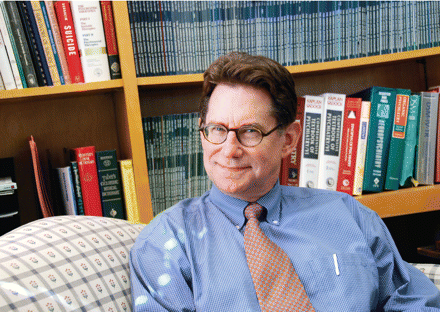Will Baby Boomers Rewrite Data on Elderly Suicides?
Abstract
Yeates Conwell, M.D., came to his studies of suicide among the elderly from an opposite direction, an interest in the resilience of older people. "They face, manage, and successfully negotiate a tremendous number of challenges in their lives and, for the most part, succeed," said Conwell, a professor of psychiatry at the University of Rochester School of Medicine and Dentistry. The people who have trouble managing those challenges are the exception rather than the rule.
"So how can we take the lessons of people who have aged successfully and learn to prevent bad outcomes among those who might not be so well equipped?" he asked in an extended interview in his office at the university's medical center (see Multidisciplinary Approach Used).
Throughout the world—not just in the United States—older people, especially older men, are at greater risk for suicide than other segments of society.
Why men are more likely to commit suicide and why they are less amenable to preventive interventions remains a mystery, even for an expert in the field such as Conwell.
"The question takes us to the leading edge of our knowledge of suicide in later life," he said.

Yeates Conwell, M.D., says that much remains to be learned about the differences in men's and women's risk and protective factors for suicide.
Perhaps there are biological differences between men and women that come into play, he said. Men also tend to use more lethal means of suicide, like guns. However, the reasons are more likely social.
"In my clinical experience, men are more difficult to engage in mental health treatment or even in discussions of emotional states that would reveal distress and might give a signal for interventions," he said.
Also, women are more likely to have a history of engagement and social connectedness. "Engaging in social relationships and finding meaning in life offer protection against suicide, at least empirically."
Weaving Together a Web of Factors
No one would suggest that suicide is a simple phenomenon. Conwell tries to isolate and then tie together the many sets of factors that lead to that tragic endpoint by elaborating on the multiaxial system familiar to psychiatrists.
A review of the literature reveals that most elderly people who committed suicide had an Axis I disorder, most often an affective disorder, he said. Schizophrenia or anxiety rarely come into play as risk factors among older populations. Studies of dementia have produced mixed results although, as a precaution, Conwell said that dementia and delirium in elderly patients should still be considered risk factors for suicide.
Among Axis II diagnoses, personality disorder among suicide decedents is not a useful predictor, but symptoms of high neuroticism and a low degree of openness to experience do appear as suicide risk factors.
Medical illness and pain listed on Axis III are both independent and interdependent variables, he noted. Studies have found that subjects with multiple comorbid physical illnesses have an increased risk for suicide.
Two other dimensions play significant roles in suicide among older people.
Psychological autopsy studies have shown that social factors such as loss, bereavement, social isolation, financial troubles, or disruptions in family life indicated in Axis IV raise the risk of suicide.
Axis V indicators of functional status become significant when joined by other factors. "Most older people normally ride through functional decline, so it's not those factors alone."
No single factor predicts suicide, he said.
"If you think of the axes as Venn diagrams, no single one can predict suicide," he said. "But where those five circles overlap, you get increased cumulative risk, and we need to understand the interactions among those domains."
Greater Role Needed From Primary Care
Finding vulnerable individuals and intervening with them is unlikely to fall to mental health providers alone, because the elderly use them too rarely, he said.
Since two-thirds of older people who kill themselves have visited their primary care physician in the month before death, primary care is a logical place to situate screening and intervention tactics.
Looking at suicide among the elderly is not an academic exercise, now that the "baby boom" generation has begun turning 65.
"As a cohort, they already have increased rates of suicide, and now they are entering a period of life that is always associated with higher rates," he said.
But that statistical confluence may be partially offset by some mitigating factors.
"They have strength in numbers," said Conwell. "They have political clout, they're active, and they demand services."
The older population bulge may also shift the country's youth-oriented culture at least part of the way toward an appreciation of the values conferred by age.
"Older people have experience and skills and knowledge," said Conwell. "If that could be appreciated and valued, it might change the social context for suicide happening."



